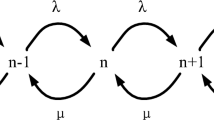Abstract
Combining with the in-depth study of speech signal processing technology, the sound can be matched to a unique speech recognition target, and the direction, type and content of the sound can be accurately located. In this paper, a self-organizing sensor node is designed and applied, which can monitor and collect various environmental information. Cover and report to interested users after processing. Due to its advantages such as strong flexibility, high reliability, convenient expansion, and good economy, wireless sensor networks are beyond the reach of other technologies in the new era. They are used in the fields of military, industrial manufacturing and control, environmental protection, and sanitation supervision. With great advantages, wireless sensing technology has been widely used. Countries all over the world that value university defense research have relatively complete defense systems, mechanisms, and legal systems. Israel’s training institutions are networked, training content is systematized, training guarantees are militarized, and the long-term effects of national defense training and defense force building are improved. In the United States, we must conscientiously establish a legal guarantee system for national defense training and use, continue to establish facilities for reserve officers, and continue to adhere to the “key disciplines” of local schools and universities to lay the foundation for national defense. Based on the acoustic signal processing technology, this paper improves the wireless sensor network and applies it to national defense training.






Similar content being viewed by others
References
Ahir K, Govani K, Gajera R et al (2020) Application on virtual reality for enhanced education learning, military training and sports. Augment Hum Res 5(1):1–9
Bello-Salau H, Aibinu AM, Wang Z et al (2019) An optimized routing algorithm for vehicle ad-hoc networks. Eng Sci Technol Int J 22(3):754–766
Gong J, Zhang D, Liu C et al (2019) Power control strategy and performance evaluation of a novel electro-hydraulic energy-saving system. Appl Energy 233:724–734
Hughes CR (2017) Militarism and the China model: the case of National Defense Education. J Contemp China 26(103):54–67
Hyun KH, Kim EH, Kwak YK (2010) Emotional feature extraction method based on the concentration of phoneme influence for human–robot interaction. Adv Robot 24(1–2):47–67
Kurzekar PK, Deshmukh RR, Waghmare VB et al (2014) A comparative study of feature extraction techniques for speech recognition system. Int J Innovat Res Sci Eng Technol 3(12):18006–18016
Maraiya K, Kant K, Gupta N (2011) Application based study on wireless sensor network. Int J Comput Appl 21(8):9–15
Mun HJ, Han KH (2020) Design for access control system based on voice recognition for infectious disease prevention. J Korea Convergence Soc 11(7):19–24
Shen M, Li B (2020) A probe into the cultivation path of National Defense Education in colleges and universitiest: taking the Department of Film and Television Art of Shanghai Publishing and Printing College as an Example. Creat Educ 11(11):2346
Vogel-Walcutt JJ, Fiorella L, Malone N (2013) Instructional strategies framework for military training systems. Comput Hum Behav 29(4):1490–1498
Wang Y, Feng S, Zhang J (2021) Research on the construction of general competency model for national defense, science and technology talents–from the perspective of talent training in national defense science and technology universities. CONVERTER 8:139–154
Yuk HS, Cho BC (2015) A study on the humanistic measure about cultural changes of voice recognition technology. J Digit Convergence 13(8):21–31
Funding
The study and all authors have received no funding.
Author information
Authors and Affiliations
Corresponding author
Ethics declarations
Conflict of interest
The authors report no conflicts of interest.
Ethical approval
This article does not contain any studies with human participants performed by any of the authors.
Informed consent
Not applicable.
Additional information
Publisher’s Note
Springer Nature remains neutral with regard to jurisdictional claims in published maps and institutional affiliations.
Rights and permissions
Springer Nature or its licensor (e.g. a society or other partner) holds exclusive rights to this article under a publishing agreement with the author(s) or other rightsholder(s); author self-archiving of the accepted manuscript version of this article is solely governed by the terms of such publishing agreement and applicable law.
About this article
Cite this article
Chen, X. Application of voice recognition system oriented to wireless sensor network in National Defense Education. Int J Syst Assur Eng Manag (2023). https://doi.org/10.1007/s13198-023-02067-z
Received:
Revised:
Accepted:
Published:
DOI: https://doi.org/10.1007/s13198-023-02067-z




